J.T. Green & Peter Werbe
J.T. Green
I READ PETER WERBE’S ARTICLE IN THE AUGUST EDITION OF FERNDALE FRIENDS with some alarm, and would like to present a rebuttal to what I believe are serious flaws in both facts and arguments.
The thrust of Mr Werbe’s argument is that the Ferndale recycling program is a net loss to the environment.
Firstly, Mr. Werbe focuses his ire on plastic exclusively; and in the process completely ignores that it is uncontroverted that glass and paper are the most easily recyclable substances known to man. If all of the paper currently thrown away in the United States were to be recycled, it would save approximately one billion trees a year. Similarly, producing glass consumes a huge amount of energy (inasmuch as sand is essentially melted down). The process for recycling glass for commercial use is much less energy-intensive. In order to promote recycling, Ferndale uses “single stream” recycling; meaning that all recyclables are recycled in the same container, a method which has been proven to increase recycling among the general population.
Speaking of containers, Mr. Werbe goes on to complain that the containers used to recycle are not themselves recyclable. Well, that’s beside the point, isn’t it? Unlike most household plastics, things like traffic cones, park benches and recycl-ing containers (which also come in for undeserv-ed criticism) are not intended for one-time use; they are intended to be a durable good. There is no point in a park bench being recyclable a sec-ond time, because it’s meant to be installed in a park and sit there for the next 20 years.
Mr. Werbe then goes on to argue that recycling plastic is a net loss to the Earth; a proposition that is as ludicrous as it is completely discredited by the scientific community. The process of recycling plastic uses 50 per cent less energy than the most common method of plastic disposal; which is incineration. By choosing to recycle plastic, we cut our carbon emissions by half. Secondly, by recycling just one ton of plastics, roughly 2000 pounds of oil can be kept in the ground. Recycling plastics further creates jobs; it’s a $5.4 billion dollar industry, which does not include the jobs generated at recycling plants in which recyclable materials are sorted.
No one is arguing for the use of more plastic, but we have to take the world as we find it. Recycling plastic is the best way we have to mitigate the effects of our use of plastic on the environment. What I find truly shocking, is that in 2017, I have to write an article in Ferndale Friends, in one of the most progressive cities in America, in support of recycling.
J. T. Green is a member of the Union of Concerned Scientists as well as EarthLaw, but is writing in a personal capacity.
Peter Werbe responds:
THANK YOU, J.T. FOR EXTENDING THIS CRUCIAL DISCUSSION. I’m sure you, like so many others, realize the planet is at a critical point, perhaps one of no return from the damage done by the fossil fuel/petrochemical/nuclear/industrial system. The rise in CO2 content in the atmosphere, the increasing species die-off, the systematic destruction of forests and natural environment, the poisoning of the seas and over-fishing — the list could on considerably longer.
Recycling as a solution to this is an illusion, one sown primarily by those industries which cause the damage in the first place. Let me repeat a little of what I said in the column you find alarming.
Most of what is threatening life on the planet comes from industry, not municipal waste streams. Although the 97%-3% ratio is challenged to some extent, industrial and mining solid waste still make up the vast majority of the trash of an out-of-control production and consumption system. These are older figures, but 250 million tons of municipal waste is produced yearly, while 7.6 billion tons of nonhazardous industrial waste comes out of factories and mines. And it’s growing steadily each year as the world-wide machine increases its frantic pace of production.
Sure, some of the latter can be recycled, but your organization cites metal reprocessing, for instance, as a major source of pollution in Houston, as are the city’s waste oil disposal sites. And, this is true of every recycling facility.
Increasing the number of recycling plants will add measurably to pollution overall. As I wrote, the reprocessing of anything is a toxic procedure (how do you think they get ink off of paper and where does that go?) and adding more buildings, trucks spewing exhaust, workers driving, etc., means it’s less than zero sum.
But, let’s get closer to home and look at the green behemoths that were recently dropped off and made so many giddy with excitement. With single-stream recycling, glass is a major component, but a third of it winds up broken and it’s off to the landfill. That same figure applies to all of recyclables that are contaminated by broken glass shards, food residue, oil, etc.
And, who are the big advocates of recycling as a mask for their poisonous products? The Union of Concerned Scientists cites the American Chemical Society, the American Petroleum Institute, the American Plastics Council as using their advocacy of recycling as a fig leaf for continuing their practices just as they are.
The Saving-a-Billion-Trees line is one promoted by the American Loggers Council. Almost all trees cut for paper are ones grown specifically for that purpose.
Plastic? You are defending plastic? Oh, if only everyone would recycle their plastic. Well, they don’t, they won’t, and they can’t. Much of what is produced isn’t recyclable and 20 years goes by pretty quickly for your park benches. Where do they go then? Most of it just gets dumped into landfills where it takes 1,000 years to break down, while leeching toxins into our land and water systems.
Here are a few things that aren’t recycled: The 100 billion plastic grocery bags used every year and are not permitted in our bins. The 500 million straws a day Americans throw away. The 25 billion Styrofoam cups discarded every year, including four billion from Starbucks alone. Plus, even though the U.S. is now the leading oil producer, it will still fight wars to protect petroleum sources in the Middle East.
Coca-Cola, which airs all those TV ads about how much they value water purity, increased its production of un-recyclable PET bottles by one billion last year, in a yearly total of 110 billion Coke containers.
And, to accommodate single-stream recycling, the SOCRRA facility on Coolidge will close for an indefinite amount of time, leaving all of what we can’t put in the bins…where?
As the American poet, E.E. Cummings once wrote, “I don’t want to startle you, but they mean to kill us all.” Well, I do mean to startle you.
The fate of the earth is at a tipping point and we need to quickly get rid of items that require recycling by first extremely and drastically reducing production and reusing what we can. If not, I fear a bad fate awaits us.


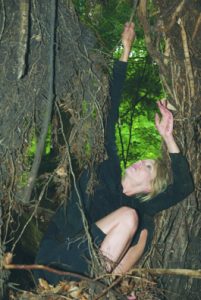 so therapeutic, are you a movement therapist?’ As I continued to dance and perform and teach, I found I was incorporating what I was learning from life/art workshops into classrooms and performances. There is an artful lens to view any and every situation, whether it’s in education, social action, or personal development. When we engage our creativity hand in hand with body expression – there is an opportunity to shift and move in new ways physically and metaphorically.”
so therapeutic, are you a movement therapist?’ As I continued to dance and perform and teach, I found I was incorporating what I was learning from life/art workshops into classrooms and performances. There is an artful lens to view any and every situation, whether it’s in education, social action, or personal development. When we engage our creativity hand in hand with body expression – there is an opportunity to shift and move in new ways physically and metaphorically.”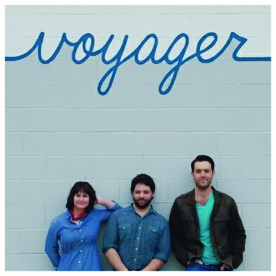
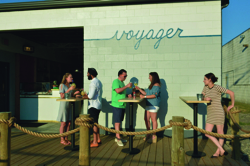 ile and stylish gold trim. The color palette and vaguely Scandinavian-inspired design gives off a mid-century modern vibe, bolstered by the vintage school chairs that double as seating. The 1,400-square-foot space seats 40, with 12 seats at the long bar and 28 in the dining room, which is split from the bar by a low divider sporting individual drink shelves, or “niches,” instead of a rail. Because of the restaurant’s petite size, the single glass-paneled garage door provides ample natural light. It is rolled up in warmer months to add a few more seats on the indoor/outdoor patio.
ile and stylish gold trim. The color palette and vaguely Scandinavian-inspired design gives off a mid-century modern vibe, bolstered by the vintage school chairs that double as seating. The 1,400-square-foot space seats 40, with 12 seats at the long bar and 28 in the dining room, which is split from the bar by a low divider sporting individual drink shelves, or “niches,” instead of a rail. Because of the restaurant’s petite size, the single glass-paneled garage door provides ample natural light. It is rolled up in warmer months to add a few more seats on the indoor/outdoor patio.
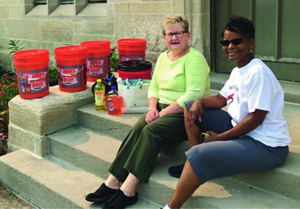

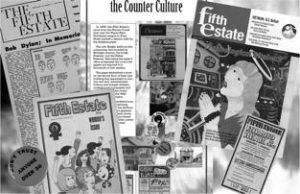 forward function. On radio, as soon as the spot break comes, boom, you hit the button for your second favorite station. But, if you’re like me, you probably read not only every article in this paper to see who is doing what and what is going on, but pay attention to the ads since they are a source of information around the community as well.
forward function. On radio, as soon as the spot break comes, boom, you hit the button for your second favorite station. But, if you’re like me, you probably read not only every article in this paper to see who is doing what and what is going on, but pay attention to the ads since they are a source of information around the community as well. and entertainment a seclusive affair. It’s not just about finding a book, or picking one out – talking about books, browsing for something with a librarian’s recommendation, or get-ting to compare something you read in a group or one of our book clubs, can not only enhance your enjoyment, but bring you deeper understandings of the world, of history, of the human experience.
and entertainment a seclusive affair. It’s not just about finding a book, or picking one out – talking about books, browsing for something with a librarian’s recommendation, or get-ting to compare something you read in a group or one of our book clubs, can not only enhance your enjoyment, but bring you deeper understandings of the world, of history, of the human experience.